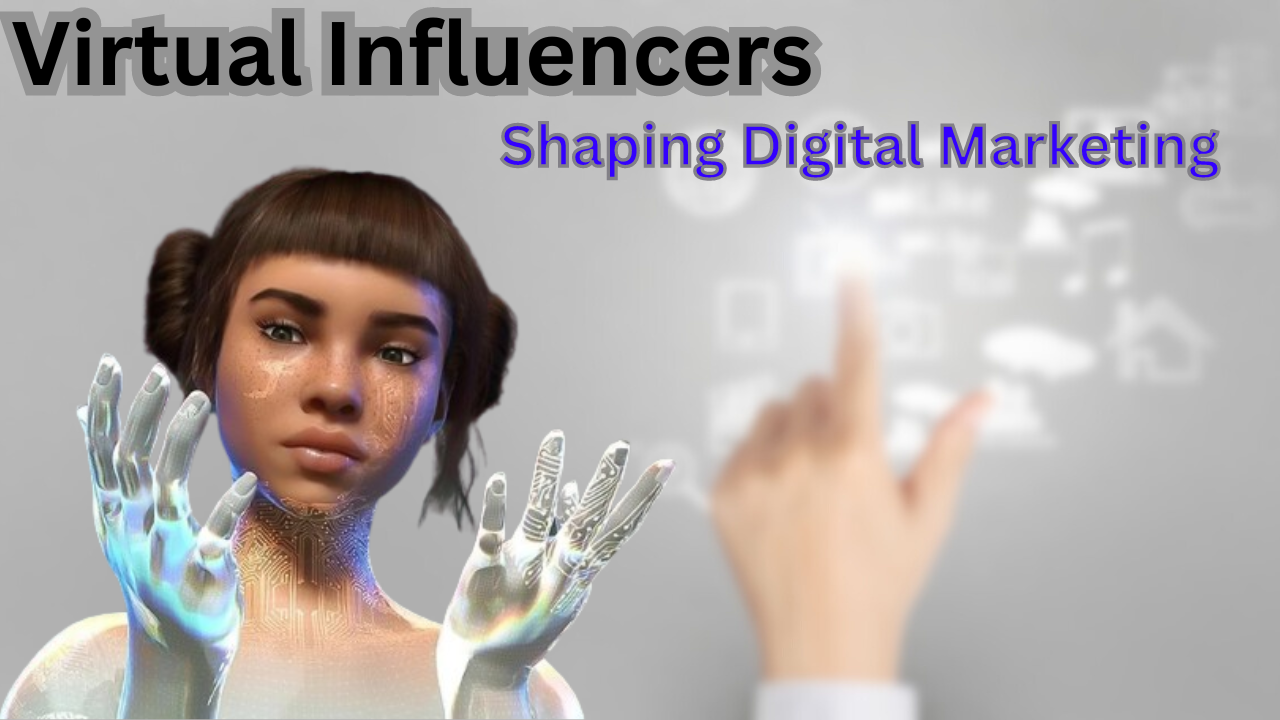In the ever-changing world of digital marketing, a new trend is taking off, virtual influencers. These computer-generated characters, often so realistic you can’t tell they’re not human, are grabbing the attention of brands and audiences everywhere. Virtual influencers have some cool advantages over traditional influencers, they can be perfectly managed, never have a bad day, and always deliver flawless marketing campaigns. This article dives into the rise of virtual influencers, how they’re changing marketing, and why they might just be the future of digital influence.
What are Virtual Influencers?
Virtual influencers are like digital characters brought to life using computer graphics and artificial intelligence. Unlike real people, they don’t age, need no maintenance, and can be customized to have any style or personality. These digital personas are often managed by creative teams or brands, who shape their appearance, voice, and online presence to connect with target audiences.
The Appeal of Virtual Influencers:
Consistency and Control:
One big advantage of virtual influencers is the total control brands have over their image and actions. Unlike human influencers, digital ones don’t have bad days or get involved in scandals. They maintain a consistent brand message and personality, ensuring reliable and predictable marketing campaigns.
Creative Freedom:
Virtual influencers can look and act any way you want. This creative freedom lets brands experiment with unique and innovative marketing strategies, making eye-catching content that stands out in a crowded digital space.
Cost Efficiency:
Creating a virtual influencer might cost a lot upfront, but long-term expenses can be lower compared to human influencers. There are no fees for appearances, travel, or personal demands. Plus, virtual influencers can work around the clock, keeping audiences engaged 24/7.
Popular Virtual Influencers:
Lil Miquela:
One of the most famous virtual influencers, Lil Miquela, was created by the company Brud. With millions of followers on Instagram, Miquela works with top fashion brands, releases music, and connects with her audience through compelling stories and visuals.
Shudu:
Shudu is the world’s first digital supermodel, created by photographer Cameron-James Wilson. Known for her stunning beauty and high-fashion collaborations, Shudu challenges traditional ideas of modeling and influencer marketing.
Imma:
Imma, a virtual influencer from Japan, is known for her striking pink hair and fashion-forward style. She has partnered with global brands like IKEA and Dior, showcasing the versatility and worldwide appeal of virtual influencers.
The Impact on Marketing:
Engagement and Reach:
Virtual influencers are seeing high engagement rates, often beating their human counterparts. Their novelty and unique content attract curious followers, while their carefully created personas keep people interested and loyal,
Targeted Campaigns:
Brands can design virtual influencers to appeal to specific groups, creating highly targeted marketing campaigns. This precision allows for more effective audience segmentation and personalized content, boosting marketing results.
Brand Safety:
Virtual influencers eliminate the risks associated with human influencers, like controversial behavior or personal scandals. Brands can ensure their digital ambassadors always align with their values and maintain a positive public image.
Challenges and Considerations:
Authenticity:
One main criticism of virtual influencers is their perceived lack of authenticity. While they can engage and entertain, some audiences might feel disconnected from these artificial personas. Brands need to balance creating engaging content with maintaining a sense of reliability.
Ethical Concerns:
The rise of virtual influencers brings up ethical questions about transparency and manipulation. Brands need to disclose the artificial nature of these influencers to avoid misleading consumers and to maintain trust.
Technological Limitations:
Creating and maintaining high-quality virtual influencers requires advanced technology and expertise. Brands must invest in skilled teams and resources to ensure their virtual influencers stay current and appealing.
The Future of Virtual Influencers:
The rise of virtual influencers shows the ongoing digital transformation in marketing. As technology evolves, virtual influencers will become even more sophisticated and integrated into our daily lives. Advances in AI and machine learning will enable these digital personas to engage with audiences in more personalized and realistic ways, further blurring the lines between digital and reality.
Conclusion: Dive into the World of Virtual Influencers:
Virtual influencers are more than just a trend, they represent a new frontier in digital marketing. By adopting the creative opportunities and strategic benefits they offer, brands can connect with audiences in innovative and impactful ways. The rise of virtual influencers shows a change in how we think about influence and authenticity online, offering endless opportunities for brands ready to dive into this exciting new world.
Step into the future of marketing, explore the potential of virtual influencers and watch as your brand’s influence rises to new heights in the digital age. The future is virtual, and the opportunities are limitless.
